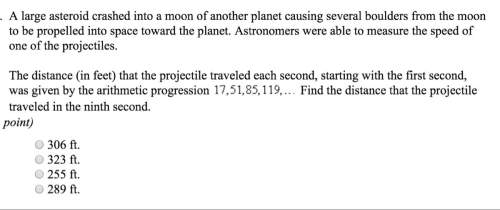
Mathematics, 04.12.2020 05:50 apowers6361
A shoe company wants to test an updated model of a running shoe on its wear after one month of running. They recruit 50 people who run on a regular basis to participate in the study. They will have the runners wear the shoes when they run for two months. After two months, the wear on the shoes will be determined using the depth of the tread and flexibility of the toe box. The wear between the new model and the original model will then be compared. The company decides to use a matched pairs design and devises two options.
Option A: The 50 subjects are paired based on running ability. The fastest two runners are paired together, the next fastest two, etc. For each pair of runners, the researcher will flip a coin. If the coin lands on heads, then the first runner will receive the new model of shoes and the second runner will receive the original model. If the coin lands on tails, the first runner will receive the original model of shoes and the second runner will receive the new model. After 2 months of use, the difference in wear for the pairs of runners will be determined.
Option B: The 50 subjects will each receive both models of shoes. At the beginning, the runner will flip a coin, and if it lands on heads, they will wear the new model on their right foot and the original model on their left foot. Then after one month, they will change and use the new model on their left foot and the original model on their right foot. After the second month, the wear for each model will be determined and compared for the 50 runners.
Which option should the shoe company use to compare the two models?
A. a: The runners are paired based on their running ability. This will provide an accurate comparison for the difference in wear between the original model and the new model.
B. b: Each runner varies with respect to multiple variables. Each runner should use both models to account for their individual differences. This will provide an accurate comparison for the difference in wear between the models.
C. Both A and B: Both provide an accurate comparison for the difference in wear between the original model and the new model. The runners are paired in option A based on running ability, and each runner uses both models in option B.
D. Neither A nor B: Neither provides an accurate comparison to determine the difference in wear for the two models. This experiment should be a randomized block design.

Answers: 3


Other questions on the subject: Mathematics

Mathematics, 21.06.2019 15:30, WhiteWinterRose
Which equation represents the line that passes through the points and (4, 10) and (2, 7)? y = 3/2x - 11y = 3/2x +4y = - 3/2x + 19y = - 3/2x + 16
Answers: 2


Mathematics, 22.06.2019 00:00, Naomi7021
Which is a logical conclusion based on the given information? a. figure abcd is a rhombus by the definition of a rhombus. b. segment ac is congruent to segment dc by cpctc. c. angle acb is congruent to angle adc by the angle-side-angle theorem. d. triangle acd is congruent to triangle cab by the hypotenuse-leg theorem.
Answers: 1
You know the right answer?
A shoe company wants to test an updated model of a running shoe on its wear after one month of runni...
Questions in other subjects:


Mathematics, 05.07.2019 12:00

Biology, 05.07.2019 12:00

Mathematics, 05.07.2019 12:00




Biology, 05.07.2019 12:00

Mathematics, 05.07.2019 12:00





